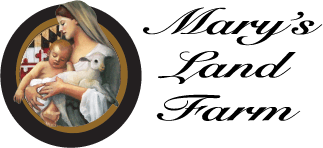Orchards
When we started to farm our land, we conceived a design that incorporates thousands of trees, shrubs, herbaceous plants, and more. The intent was to integrate sections of “food forests” around the farm that would provide food for our customers, livestock, and wildlife, as well as habitats for wildlife.
We began by creating berms (mounded, contoured) beds. This was done by digging out swales (large trenches) uphill. The berms and swales help slow down and conserve water; as it flows down the berms into the swales, it collects and spreads out more evenly, providing long-term drought and flood protection. Search the internet for pictures of Incan terraces or rice terraces to get a visual.
Essentially, the plant roots are likely to remain moist during hot and dry seasons, and comfortably dry during heavy periods of rain and snow. Additionally, as our livestock run in and around these areas, their manure efficiently and effectively improves the fertility. Can you imagine laying compost on thousands of perennials across 3+ miles?
Dozens of species are planted on the swales (1000s of plants) both native and non-native. Here is a sample:
-Fruit and Nut Trees: Persimmons, Pawpaws, Pears, Apples, Peaches, Jujubes, Chinese Chestnuts, Pecans, Korean Pine Nuts
-Fruit and Nut Shrubs: Elderberry, Hazelnuts, Juneberries, Currants, Gooseberries, Nanking Bush Cherries, Jostaberries, Goji Berries, Goumi Berries, Sea Buckthorn Berries, Blackberries, Raspberries
-Other Trees: Black and Honey Locust, Oaks, Maples, Linden, Birch, Cypress
-Other Shrubs: Alder, Ninebark, Baptisia, Bayberry, Buttonbush, Sumac, Winterberry
There is also a very special section of the farm called the food forest, which is comprise of fruit and nut perennials, including apple, pear, plum, pecan, apricot, peach, chestnut, pine, pawpaw, jujube, persimmon, sugar maples, and more. The shrubs include bush cherries, currants, hazelnuts, elderberries, gooseberries, raspberries, blackberries, jostaberries, juneberries, goji berries, and more.
The trees and shrubs that primarily benefit our wildlife and their ecosystem include oak, crabapple, and black locust (that have edible value for us too, but aren’t as much of our focus). Beyond the tree and shrub layers, we have hardy kiwis, muscadine grapes, perennial cut flowers, native plants, herbs, and more.
Compared to vegetable production, it will take years before we can truly harvest a substantial amount of food from these trees, shrubs, and vines. Over time, the level of maintenance will decrease (although there will always be work such as pruning and mulching), and further propagation will increase.
Recently, we started a nursery to provide plants to customers that would like to grow their own.

Now Taking Pre-orders for Easter Hams and Lamb Roasts
Impress your guests with local & tasty Pasture-Raised Pork Hams or Lamb Roasts. Orders due March 22 for pickup March 23-30.
Adding {{itemName}} to cart
Added {{itemName}} to cart
Stay tuned with weekly newsletters.
No worries, we don’t spam your inbox.
Education and Events
About Mary's Land Farm
© 2024 Mary's Land Farm. All rights reserved.

